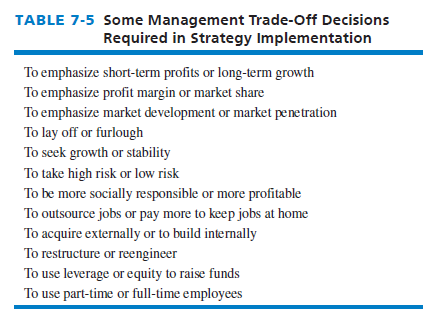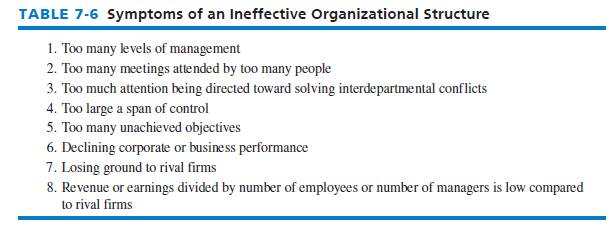Changes in strategy often require changes in the way an organization is structured, for two major reasons. First, structure largely dictates how objectives and policies will be established. For example, objectives and policies established under a geographic organizational structure are couched in geographic terms. objectives and policies are stated largely in terms of products in an organization whose structure is based on product groups. The structural format for developing objectives and policies can significantly impact all other strategy-implementation activities.


The second major reason why changes in strategy often require changes in structure is that structure dictates how resources will be allocated. If an organization’s structure is based on customer groups, then resources will be allocated in that manner. Similarly, if an organization’s structure is set up along functional business lines, then resources are allocated by functional areas. Unless new or revised strategies place emphasis in the same areas as old strategies, structural reorientation commonly becomes a part of strategy implementation.
Alfred Chandler promoted the notion that “changes in strategy lead to changes in organizational structure.” Structure should be designed to facilitate the strategic pursuit of a firm and, therefore, follow strategy. Without a strategy or reasons for being (mission), companies find it difficult to design an effective structure. There is no one optimal organizational design or structure for a given strategy or type of organization. What is appropriate for one organization may not be appropriate for a similar firm, although successful firms in a given industry do tend to organize themselves in a similar way. For example, consumer goods companies tend to emulate the divisional structure-by-product form of organization. Small firms tend to be functionally structured (centralized). Medium-sized firms tend to be divisionally structured (decentralized). Large firms tend to use a strategic business unit (SBU) structure or matrix structure.
When a firm changes its strategy, the existing organizational structure may become ineffective. As indicated in Table 7-6, symptoms of an ineffective organizational structure include too many levels of management, too many meetings attended by too many people, too much attention being directed toward solving interdepartmental conflicts, too large a span of control, and too many unachieved objectives. Changes in structure can facilitate strategy-implementation efforts, but changes in structure should not be expected to make a bad strategy good, to make bad managers good, or to make bad products sell.
Structure undeniably can and does influence strategy. Strategies formulated must be workable, so if a certain new strategy requires massive structural changes, it may not be an attractive choice. In this way, structure can shape the choice of strategies. But a more important concern is determining what types of structural changes are needed to implement new strategies and how these changes can best be accomplished.
Source: David Fred, David Forest (2016), Strategic Management: A Competitive Advantage Approach, Concepts and Cases, Pearson (16th Edition).

18 May 2021
17 May 2021
18 May 2021
18 May 2021
17 May 2021
17 May 2021